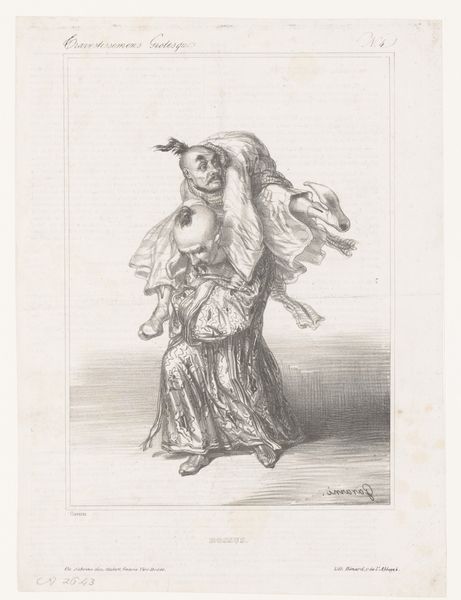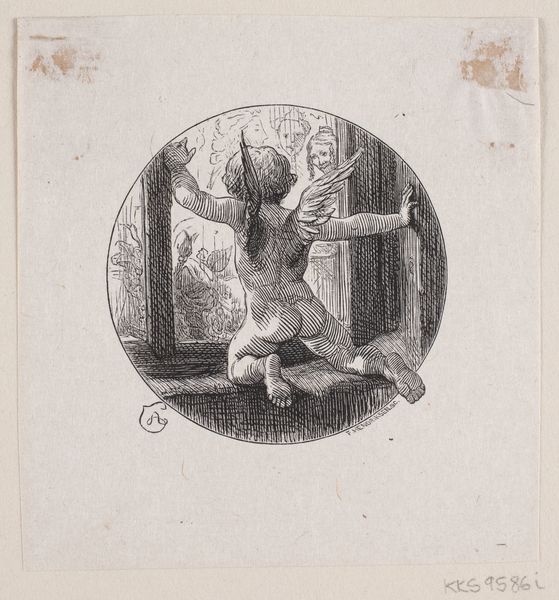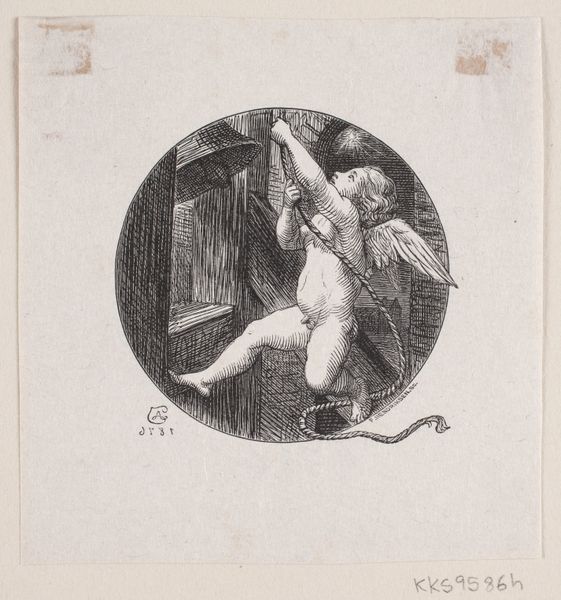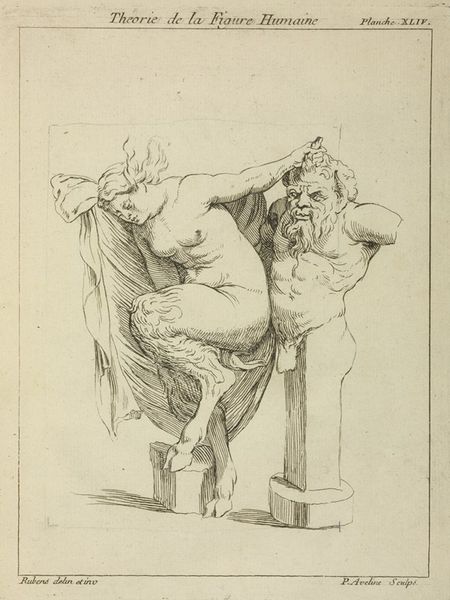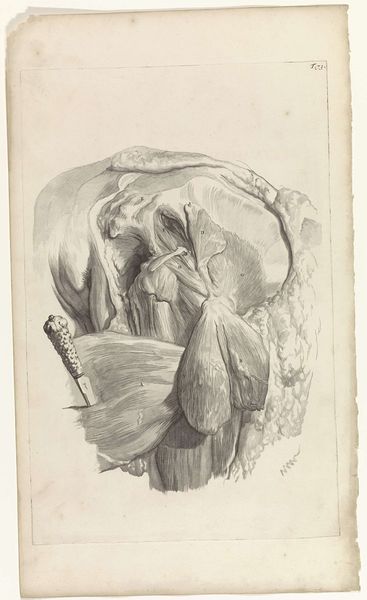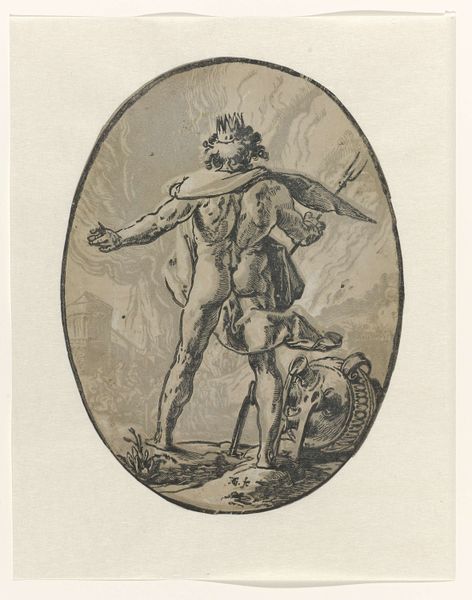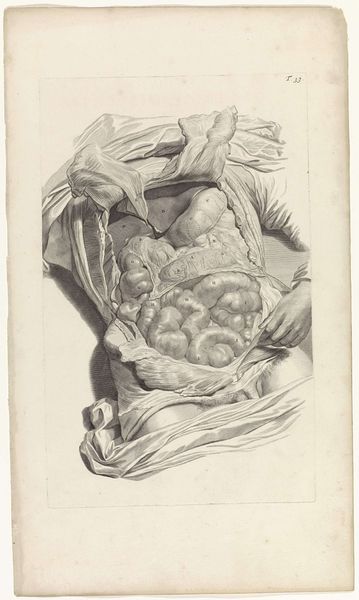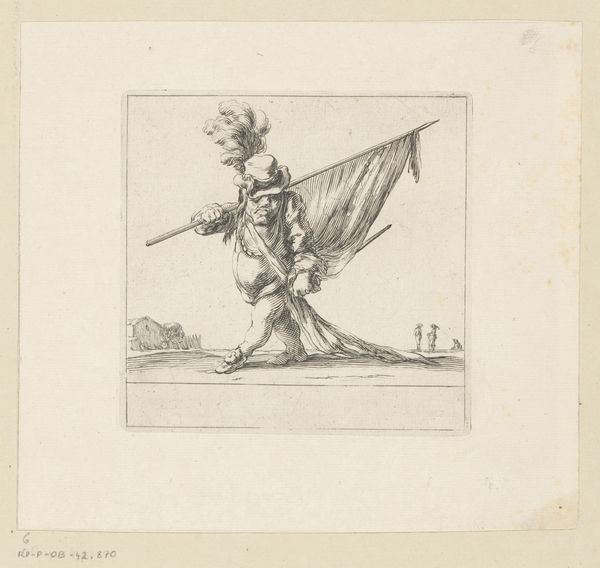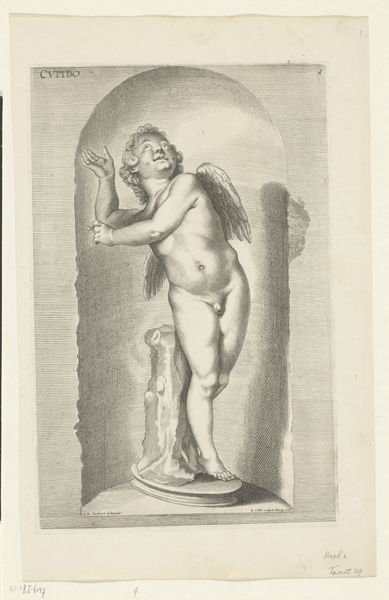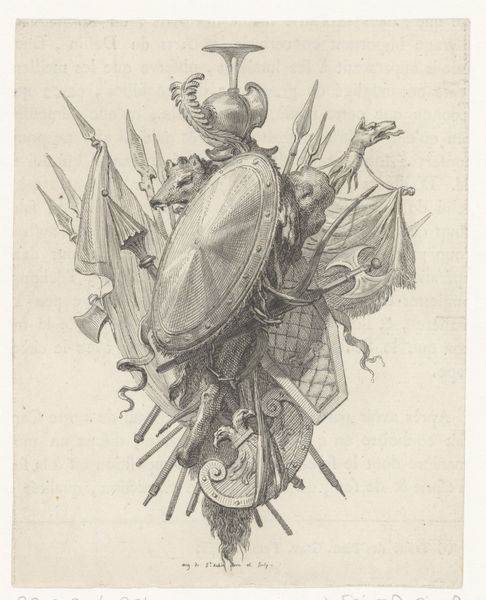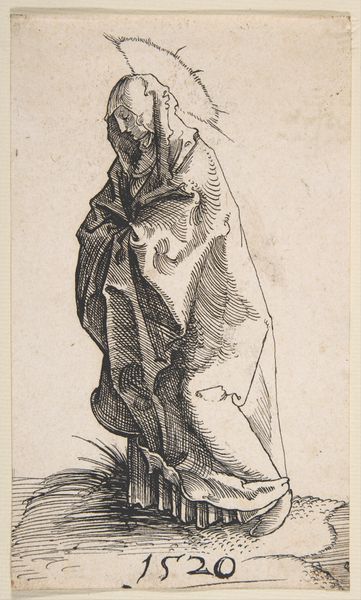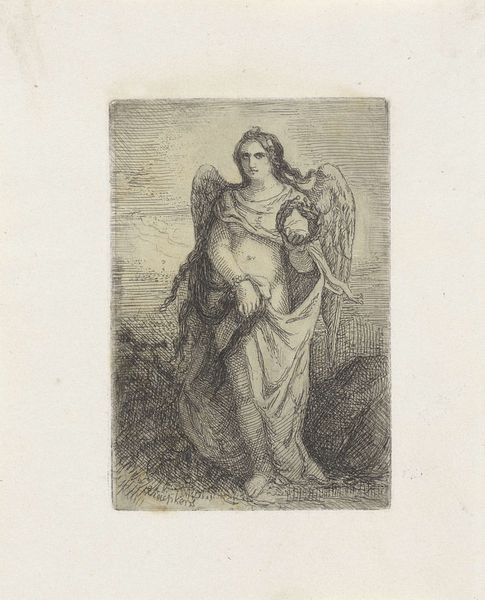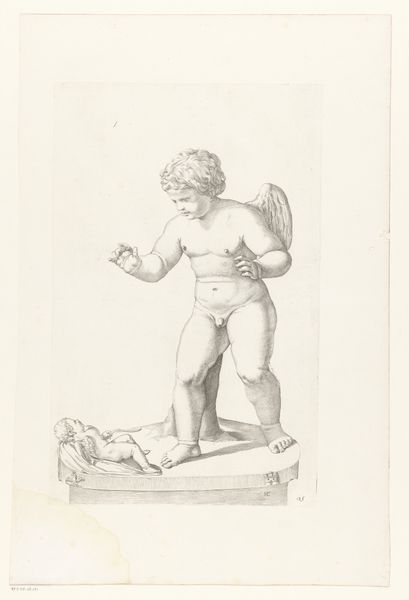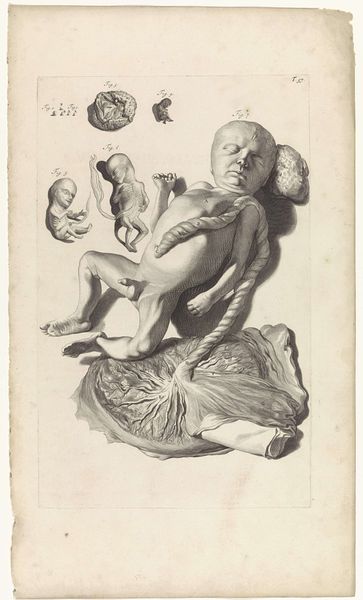
Naakt kind met schilderspalet en portret van overleden kunstenaar en rouwsluier 1797 - 1829
antonisaloisiusemanuelvanbedaff
Rijksmuseum
drawing, ink
portrait
drawing
narrative-art
figuration
ink
line
history-painting
academic-art
Dimensions: height 81 mm, width 100 mm
Copyright: Rijks Museum: Open Domain
Editor: We are looking at a drawing titled "Naakt kind met schilderspalet en portret van overleden kunstenaar en rouwsluier," or "Naked child with palette and portrait of a deceased artist and mourning veil" by Antonis Aloisius Emanuel van Bedaff. It's an ink drawing made sometime between 1797 and 1829. It has such an odd combination of subjects…What do you see happening here? Curator: It’s a fascinating example of how artistic production and mourning were intertwined in the late 18th and early 19th centuries. This image isn't just a sentimental depiction of grief; it actively participates in the construction of artistic legacy and public memory. Note the child, likely representing innocence or the future, unveiling a portrait alongside the tools of the artist’s trade. Editor: So it's like the child is revealing the artist's work to the world, even in death? Curator: Precisely! Consider also how academic art training shaped artistic representations of grief. The idealised figures and neoclassical elements suggest a highly cultivated and public display of sorrow. The veil suggests mourning, but is the child really sad? Or is it more ceremonial? Think about the role of art academies and the rise of the artist as a cultural hero in shaping this visual language. Editor: That makes me wonder about who commissioned the piece and where it might have been displayed. Was this intended for public consumption, like in an exhibition, or was it more of a private memorial? Curator: Those are crucial questions. The relatively small scale and medium – an ink drawing rather than a grand painting – might suggest a more intimate setting initially, perhaps as part of a commemorative album or family collection. However, its later presence in a museum collection transforms it into a public object, open to wider interpretation and scrutiny. Editor: This makes me realize that the artwork’s meaning isn’t fixed but changes depending on where it's shown and who’s looking at it. Thanks for sharing that view with me. Curator: Indeed. And it is up to future artists to determine whether academic art should represent cultural change, maintain the status quo, or reject social issues altogether. It has been my pleasure.
Comments
No comments
Be the first to comment and join the conversation on the ultimate creative platform.
